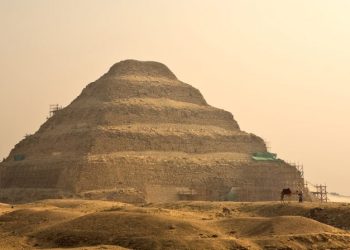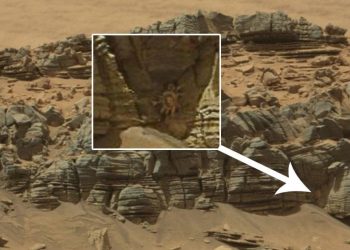Did you know that the only known natural nuclear reactor on Earth didn’t come from technology — it came from nature itself?
Long before life as we know it had evolved, Earth produced something we typically associate with human technology: a functioning nuclear reactor. Nearly two billion years ago, deep underground in what is now Gabon, Africa, a rare and naturally occurring sequence of events gave rise to a self-sustaining chain reaction of nuclear fission. This natural nuclear reactor operated safely, cycled on and off, and endured for hundreds of thousands of years — all without a single machine or engineer.
The discovery of the ancient natural nuclear reactor in the early 1970s shocked scientists and reshaped how we understand nuclear physics, geology, and even the nature of physical laws. Known today as the Oklo natural nuclear reactor, it remains the only known example of a naturally occurring nuclear reaction that achieved criticality and sustained itself over time.
How the natural nuclear reactor was discovered
In 1972, scientists analyzing uranium ore from the Oklo mine made a startling observation. The uranium contained less of the isotope uranium-235 than expected — 0.717% instead of the standard 0.720%. That fraction may sound negligible, but in the world of nuclear science, it was an anomaly that couldn’t be ignored.
Further analysis revealed that the uranium had undergone fission. Isotopes such as neodymium-143 and ruthenium-99, which form only through nuclear reactions, were present in amounts that made one thing clear: fission had occurred naturally, underground, in the distant past. And not just once. The site contained 17 distinct zones where these reactions had taken place — each operating like a self-regulating reactor.
The unique conditions that made it possible
For fission to occur naturally, a very specific set of conditions had to align. First, the concentration of uranium-235 in natural uranium had to be much higher than it is today. That was only possible in the deep past. Uranium-235 decays faster than uranium-238, and two billion years ago, it made up about 3% of natural uranium — similar to the enriched uranium used in modern reactors.
Second, there needed to be something to moderate the reaction — something to slow the neutrons produced during fission so they could trigger further reactions. In Oklo, this role was played by groundwater. As water filtered through the uranium-rich rock, it slowed down the neutrons just enough to sustain a chain reaction. When the rock heated and the water evaporated, the reaction paused. Once the area cooled and water returned, fission resumed. This created a natural on–off cycle for the natural nuclear reactor that lasted for as long as the conditions held.
Lastly, the geological structure of the area helped trap neutrons and fission products, effectively creating a sealed chamber. The natural containment kept the reaction zones isolated and allowed fission to occur intermittently for hundreds of thousands — possibly up to a million — years-
What Oklo’s natural nuclear reactor revealed about Earth and physics
The Oklo site became far more than a scientific curiosity. It offered researchers a real-world model for understanding nuclear reactions outside of human control. It provided a long-term natural experiment in how radioactive materials behave inside rock formations over immense periods of time.
Scientists have studied the site extensively to better understand how nuclear waste moves (or stays put) underground. The Oklo data also helped confirm that fundamental physical constants — such as the rate of radioactive decay — have remained stable for billions of years. If those values had changed, we would see the difference in the isotopic ratios at Oklo. We don’t. That stability reassures physicists that their models of the universe remain sound even when applied to deep time.
It also offered a rare case of nature replicating human-scale engineering. While modern reactors require precise design and safety systems, the Oklo reactor ran without any technology. The balance of uranium content, water availability, and geology created a reactor that could manage itself — an extraordinary alignment of factors that is unlikely to occur again.
A rare window into Earth’s deep past
No other natural nuclear reactor has ever been found. Oklo remains a unique geological event, made possible only during a narrow window in Earth’s history. Today, the uranium-235 content in natural ore is too low to support such reactions, and the conditions that allowed groundwater to moderate fission in Gabon may never be repeated.
The fact that the Oklo reactor happened at all is remarkable. The fact that it was discovered, billions of years later, by a species that would go on to build reactors of its own — that’s even more extraordinary.
But this quiet, ancient process buried beneath African soil tells us something powerful. Sometimes, nature runs its own experiments. And once in a very long while, it succeeds in ways we’re only just beginning to understand.











